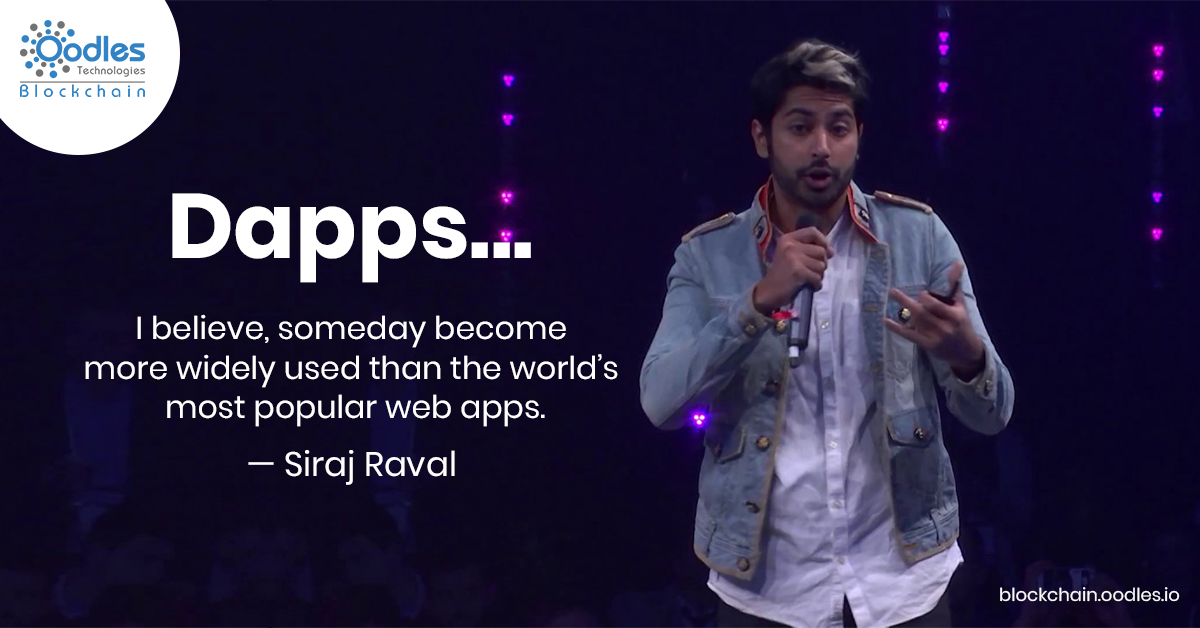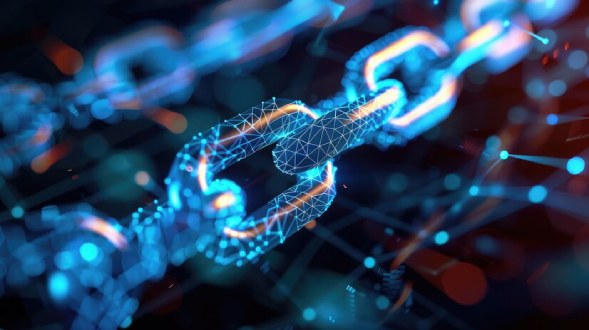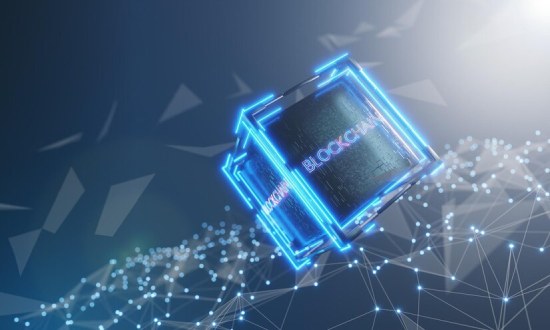-
Decentralized Applications or DApps are the blockchain apps built for a specific objective in contrast to common mobile or web apps. DApp development experts follow unique procedures to create these apps. Their basic mechanism of operation, as well as usage, make them different to traditional applications. While they can be both web or mobile based, similar to their counterparts, mobile-based DApps are gradually becoming popular, especially after blockchain debuted in the mobile device ecosystem.
The current understanding of mobile apps is as apps running on Android, iOS or other platforms. They are the interface to access a service or data on the internet. Decentralized Apps run on Android devices, but to gain access to such application, users would have to be a part of the blockchain. Although blockchain runs over the internet, it is a secured network that is accessible only to users within the closed group. This is the primary aspect that separates DApp development experts from traditional app developers.
DApp Development Experts: Decentralization Vs Centralization
The ‘D’ in DApp stands for decentralization? This word signifies one of the most important features of the technology behind such apps. As mentioned, the basis of a decentralized app is the blockchain. Blockchain is a certain portion of the internet, with intensive and strong cryptography and are comparable to connected and distributed databases throughout user bases. In here comes the concept of decentralization in opposed to centralization.
[caption id="attachment_2415" align="aligncenter" width="730"]
 Although blockchain is created over the internet, it has the basic difference of being distributed in contrast to the former.[/caption]
Although blockchain is created over the internet, it has the basic difference of being distributed in contrast to the former.[/caption]Any application on the internet, keeping aside blockchain is connected to a central database. Any user using such application connect to such a centralized system for transactions. This central database also contains the information about users and any transaction. In contrast to this mechanism, blockchain apps are connected only to the network, as there is no central server. In this ecosystem, user transaction completes at each node, referred as a ledger, which contains information and access data belonging to the user. It is not possible to delete such a node from the network unless DApp development experts, who created the blockchain, pre-programmed it to do so. Such nodes(ledgers) are connected to the chain or network through smart-contract.
Therefore, information on a blockchain is distributed throughout the network with each user completely controlling their own data. This makes a DApp completely decentralized in contrast to traditional applications.
Incentivising Open-Source development
Not all conventional applications are open-source. Although there are many open-source applications, they don’t ensure any incentives to developers. Linux based applications are open source and are based on strong communities. Still, there is no definite process of engagement, which is basically due to lack of a structured policy or mechanism to incentivize users. Android or iOS mobile applications are private apps available as products. Developers employed specifically for the purpose to create them. Also, any developer can create and put them on online app stores like Google Play Store or iPhone Apps store. While DApp development experts
Blockchain, the basis of DApp, is based on the decentralization. Bitcoin, the first DApp is basically a mechanism to decentralize money. Although most of DApps today are cryptocurrencies, all DApps does not have to be necessarily cryptocurrencies. The ledger system and smart-contracts can create decentralized applications that behave similarly to a shared database. However, from perspectives of incentives, any DApp developer can earn by creating a blockchain application as a cryptocurrency directly. Many blockchain platforms have DApps as non-cryptocurrencies. For instance, Walmart, Maersk, Deloitte, and others have been using DApps for monitoring, tracking and other objectives.
[caption id="attachment_2423" align="alignnone" width="730"]
 The emerging trend of DApps, with both cryptocurrencies or non-cryptocurrencies, will put further emphasis on decentralized application development.[/caption]
The emerging trend of DApps, with both cryptocurrencies or non-cryptocurrencies, will put further emphasis on decentralized application development.[/caption]From user perspectives
From user perspectives, DApps are specific to people interested in cryptocurrencies. However, DApps are also other general purpose applications. In this context, the concept of smart-contracts has been of great effect. In the current digital landscape, non-cryptocurrency DApps are not that popular among users, even if corporations are using the technology to optimize their internal processes. Compared to traditional apps, DApps emerges with different user experience as well as usage. Several blockchain-based mobile phones are coming up as a disruption in the market. Even portrayed as wallets for crypto-currencies they are the physical nodes to access a ledger on the blockchain. This will open up unlimited possibilities in the future of blockchain.
The emerging trend of blockchain and DApps, including both cryptocurrencies or non-cryptocurrencies, will put further emphasis on decentralized applications for both mobile devices and computers. Around 3.8 million mobile apps listed on various app stores as of now. And, less than 2,500 DApps built on blockchain platforms like Ethereum, EOS and POA Network. The number of the latter is increasing sharply. This upward trend of DApp development will create stronger networks of blockchain over the internet. The count of DApps is still negligible but it is growing faster each day.

Our Offices
INDIA
Emaar Digital Greens, Sector 61,
Gurugram, Haryana
122011.
Welldone Tech Park,
Sector 48, Sohna road,
Gurugram, Haryana
122018.














